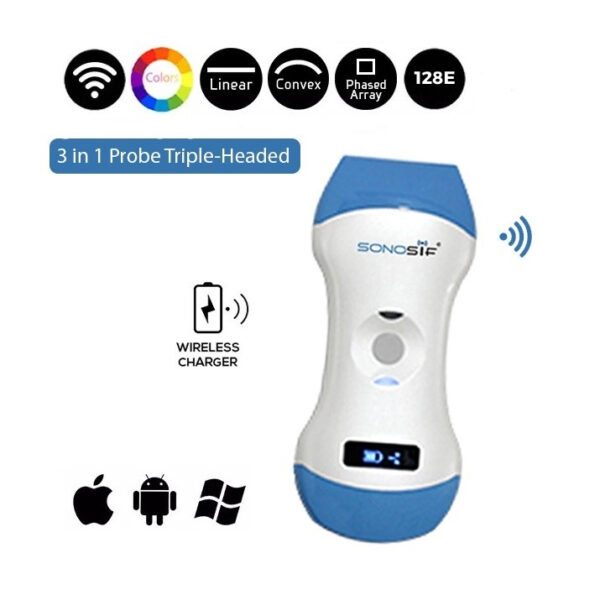- Immediate contact :
- +1-323-988-5889
- info@sonosif.com

Arterial Lines
October 23, 2020
TTE: Transthoracic Echocardiogram
October 23, 2020Focused Assessment with Sonography in Trauma ( FAST) is a point of care Ultrasound performed at the time of the presentation of a trauma patient.
More specifically, it is a rapid bedside ultrasound examination performed by surgeons, emergency physicians, and certain paramedics as a screening test for blood around the heart (pericardial effusion) or abdominal organs (hemoperitoneum) after trauma.
Which Ultrasound Scanner is best used for FAST?
The Color Doppler 3 in 1 Wireless Ultrasound Scanner 3in1-CLC1CD tends to be the first choice for Focused Assessment with Sonography in Trauma. In which, The 3.5 MHz to 5 MHz curvilinear (or abdominal) probe is used for the FAST exam to eliminate delays when switching between transducers.
However, the phased array (or cardiac) probe is effective as well, particularly with parasternal windows.
Likewise, the7.5 MHz to 10 MHz linear (or vascular) probe is ideal for assessing for pleural sliding.
The FAST exam is done in real time B-mode imaging. With the patient in the supine position at the level of the examiner’s waist, scan from the patient’s right.
This will allow the provider’s right hand to manipulate the probe while the left adjusts gain and depth to optimize image acquisition.
For transverse images, position the probe with the indicator toward the patient’s right. For sagittal views, the indicator points in the direction of the patient’s head.
The FAST exam evaluates the pericardium and three potential spaces within the peritoneal cavity for pathologic fluid.
The FAST incorporates views of the right and left anterior hemi-thoraces to detect the presence of a pneumothorax. Typically, a small amount of pleural fluid lines the interface between the parietal and visceral pleurae, allowing for synchronized lung and chest wall expansion and contraction during inhalation and exhalation, respectively.
The use of ultrasound to detect intraperitoneal fluid was first described its use decreases time to surgical intervention, patient length of stay, and rates of Computed tomography (CT) and Diagnostic peritoneal lavage (DPL).
To sum up, Ultrasound has considerable advantages, including its bedside availability, ease of use, and reproducibility. Furthermore, it is non-invasive, employs no radiation or contrast agents, and is inexpensive.
References:Focused Assessment with Sonography in Trauma,Focused Assessment with Sonography for Trauma (FAST)





